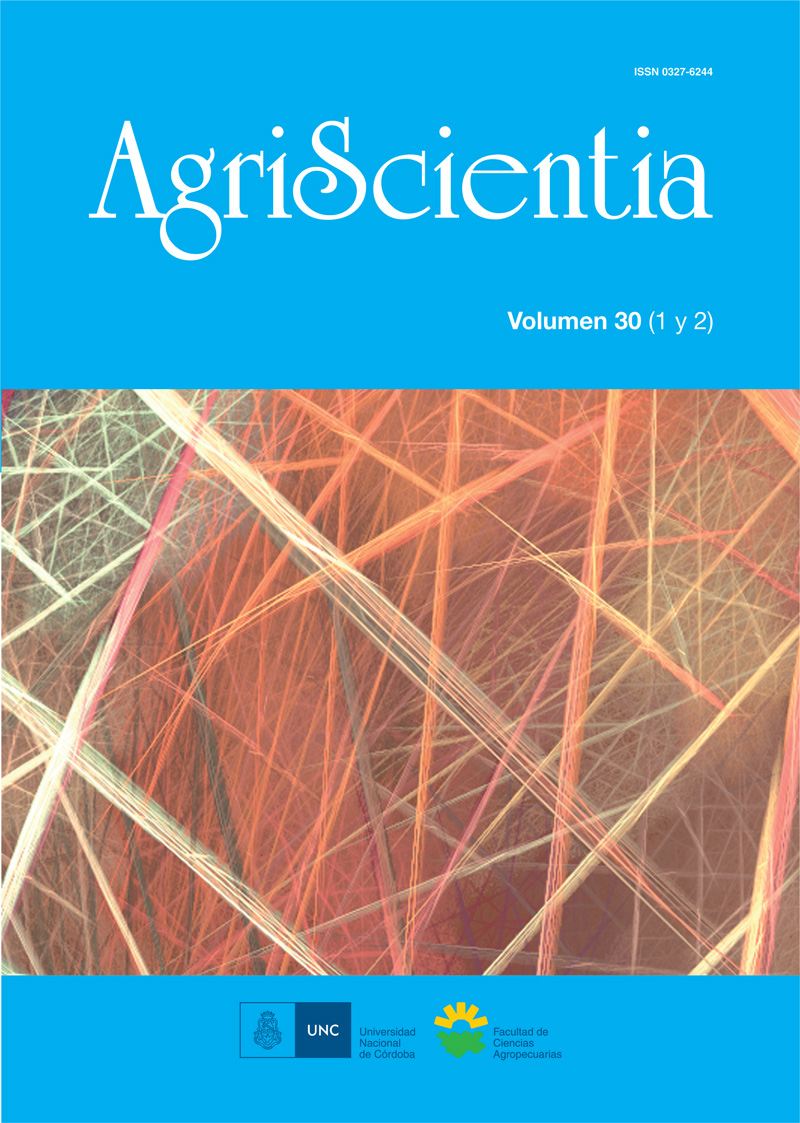View Item
- xmlui.general.dspace_homeCentros e Institutos de InvestigaciónCIRN. Centro de Investigaciones de Recursos NaturalesInstituto de FloriculturaArtículos científicosxmlui.ArtifactBrowser.ItemViewer.trail
- DSpace Home
- Centros e Institutos de Investigación
- CIRN. Centro de Investigaciones de Recursos Naturales
- Instituto de Floricultura
- Artículos científicos
- View Item
Compost de guano de gallina en la composición de sustratos para la producción de plantines florales
Abstract
Se evaluaron sustratos formulados con distintas proporciones (20, 50 y 80%) de tres tipos de compost de guano de gallina (CGG1, CGG2, CGG3) mezclados con compost de corteza de pino y un sustrato comercial. Los diez tratamientos fueron usados para el cultivo de plantines de Impatiens walleriana y Salviasplendens. Se caracterizó física y químicamente cada sustrato, y sobre los plantines se evaluó sobrevivencia, masa seca y calcio, magnesio, potasio y sodio
[ver mas...]
Se evaluaron sustratos formulados con distintas proporciones (20, 50 y 80%) de tres tipos de compost de guano de gallina (CGG1, CGG2, CGG3) mezclados con compost de corteza de pino y un sustrato comercial. Los diez tratamientos fueron usados para el cultivo de plantines de Impatiens walleriana y Salviasplendens. Se caracterizó física y químicamente cada sustrato, y sobre los plantines se evaluó sobrevivencia, masa seca y calcio, magnesio, potasio y sodio en la hoja. Los sustratos con 20% y 50% de los tres CGG tuvieron la mayor capacidad de retención de agua, y con 80%, la mayor porosidad de aire. Los sustratos con 50% y 80% presentaron los más altos valores de pH (≥6,6), potasio y sodio. Para las mismas proporciones, CGG2 y CGG3 presentaron valores de CE >1,1 dS cm-1. La mayor masa seca de los plantines se logró para el sustrato comercial, los sustratos con 20% de los tres CGG y con 50% de CGG1. Estos sustratos exhibieron en las hojas una mayor concentración de calcio y magnesio, y menor de potasio. Las mejores características de sustratos para el desarrollo de los plantines evaluados se lograron en los sustratos con 20% de los tres CGG y con 50% del compost CGG1.
[Cerrar]
Substrates formulated with different proportions (20, 50 and 80%) of three types of poultry compost (CGG1, CGG2, CGG3) mixed with pine bark compost and commercial substrate were evaluated. The ten treatments were used to cultivate seedlings of walleriana Impatiens and Salvia splendens. Each substrate was characterised physically and chemically, and the survival, dry mass and calcium, magnesium, potassium and sodium in the leaf were evaluated in seedlings.
[ver mas...]
Substrates formulated with different proportions (20, 50 and 80%) of three types of poultry compost (CGG1, CGG2, CGG3) mixed with pine bark compost and commercial substrate were evaluated. The ten treatments were used to cultivate seedlings of walleriana Impatiens and Salvia splendens. Each substrate was characterised physically and chemically, and the survival, dry mass and calcium, magnesium, potassium and sodium in the leaf were evaluated in seedlings. Substrates with 20% and 50% among the three CGG presented the highest water retention capacity and, with 80% the highest air porosity. The substrates with 50% and 80% showed the highest values of pH (≥ 6.6), potassium and sodium. For the same proportions, CGG2 and CGG3 presented CE values > 1.1 dS cm-1. The highest dry weight of the seedlings was achieved with the commercial substrate, the substrates with 20% of the three CGG and with 50% of CGG1. These substrates showed a higher concentration of calcium and magnesium, and a lower concentration of potassium in the leaves. The best characteristics of substrates for the development of the seedlings tested were achieved in the substrates with 20% of the three CGG and with 50% of compost CGG1.
[Cerrar]

Fuente
Agriscientia 30 (1) : 25-35. (2013)
Date
2013-06
ISSN
1668-298x
Formato
pdf
Tipo de documento
artículo
Palabras Claves
Derechos de acceso
Abierto
 Excepto donde se diga explicitamente, este item se publica bajo la siguiente descripción: Creative Commons Attribution-NonCommercial-ShareAlike 2.5 Unported (CC BY-NC-SA 2.5)
Excepto donde se diga explicitamente, este item se publica bajo la siguiente descripción: Creative Commons Attribution-NonCommercial-ShareAlike 2.5 Unported (CC BY-NC-SA 2.5)


